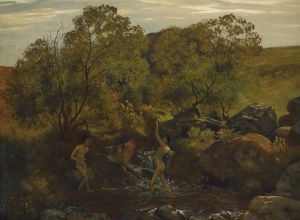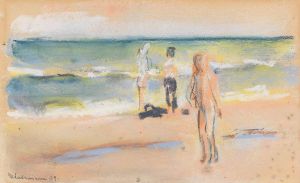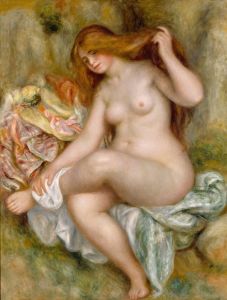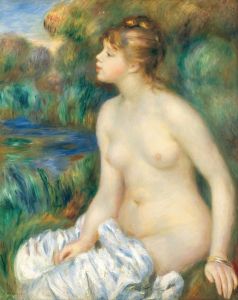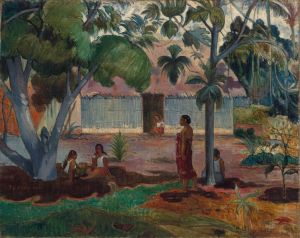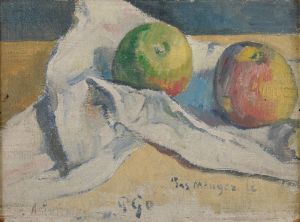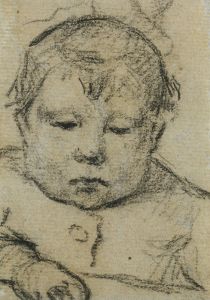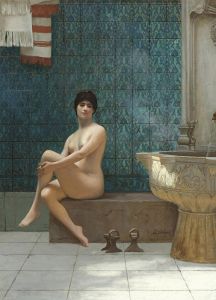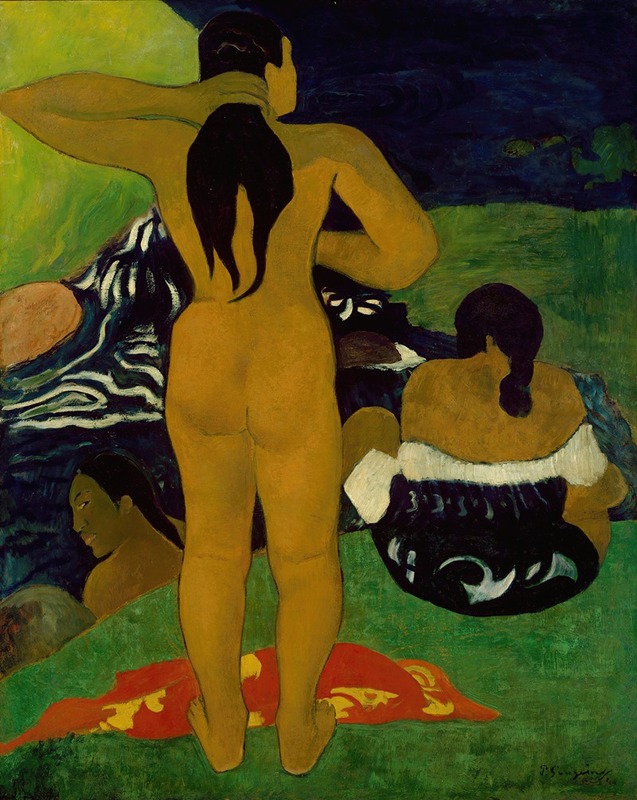
Tahitian Women Bathing
A hand-painted replica of Paul Gauguin’s masterpiece Tahitian Women Bathing, meticulously crafted by professional artists to capture the true essence of the original. Each piece is created with museum-quality canvas and rare mineral pigments, carefully painted by experienced artists with delicate brushstrokes and rich, layered colors to perfectly recreate the texture of the original artwork. Unlike machine-printed reproductions, this hand-painted version brings the painting to life, infused with the artist’s emotions and skill in every stroke. Whether for personal collection or home decoration, it instantly elevates the artistic atmosphere of any space.
Tahitian Women Bathing is an oil painting created by the French Post-Impressionist artist Paul Gauguin in 1892. The artwork is part of Gauguin's Tahitian period, during which he sought inspiration from the culture, landscapes, and people of French Polynesia. This painting reflects Gauguin's fascination with the perceived simplicity and natural beauty of Tahitian life, which he often idealized in his works.
The painting depicts two Tahitian women bathing in a serene, tropical setting. The figures are shown in a naturalistic pose, with one woman standing and the other crouching near the water. Gauguin employs bold, vibrant colors and simplified forms, characteristic of his style during this period. The composition emphasizes the harmony between the figures and their environment, with lush vegetation and water surrounding the women. Gauguin's use of flattened perspective and decorative patterns reflects his departure from traditional European artistic conventions and his interest in non-Western art forms.
Tahitian Women Bathing is notable for its exploration of themes such as the connection between humanity and nature, as well as Gauguin's romanticized vision of Tahitian culture. However, it is important to note that Gauguin's portrayal of Tahitian life was often filtered through his own imagination and Western perspective, which has been the subject of critical discussion in modern scholarship.
The painting is housed in the National Gallery of Art in Washington, D.C., where it remains an important example of Gauguin's work during his time in Tahiti. This period marked a significant phase in his artistic career, as he sought to break away from European artistic traditions and immerse himself in what he perceived as a more "primitive" and unspoiled way of life.
Gauguin's time in Tahiti was marked by both artistic innovation and controversy. While his works from this period are celebrated for their bold use of color and form, they have also been critiqued for perpetuating colonial stereotypes and for their lack of authentic representation of Tahitian culture. Despite these criticisms, Tahitian Women Bathing remains a significant piece within Gauguin's oeuvre and a testament to his influence on modern art.





